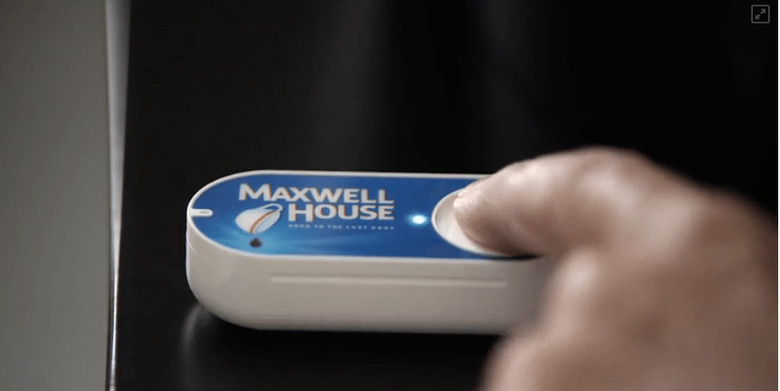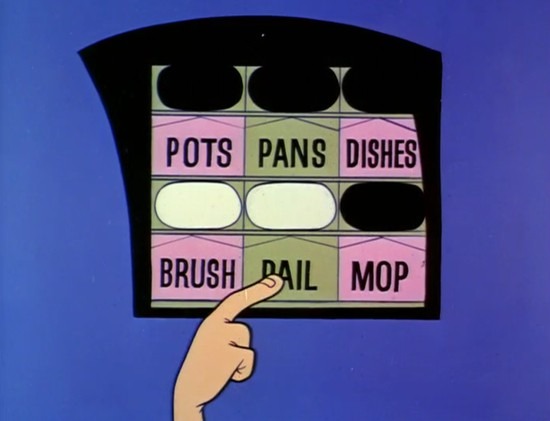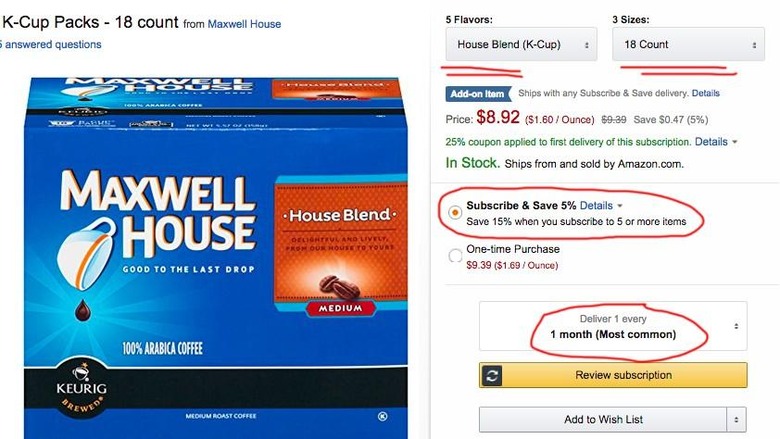Amazon Dash is a waste: here's a better option
A childhood spent watching The Jetsons teased us with one tantalizing aspect of our potential future: a home filled with buttons that, when pressed, cause things to happen. Food to appear. A robot to appear. Whatever that non-labelled unassuming button was programmed for, push it and it'll happen. If you were like most kids watching the show, you wanted that future. Really, really wanted it. When do you finally get that magical button? That future is now upon us thanks to Amazon, only it looks like an advertisement and it is far too little, too late.
On March 31, Amazon introduced its new Amazon Dash button — a small oblong piece of plastic with a brand's logo on one side and a button on the other. Connect the Dash button to your Wi-Fi network, set it up in the Amazon app, and henceforth and forever more you can simply push the button to get another order of the product shipped to your door. Getting low on laundry detergent, baby wipes, and toilet paper? Hit the buttons.
The amalgamation of oddity and timing left many wondering if it was a prematurely released April Fool's joke, but Amazon was serious, and it drove that point home last week by launching the buttons for every Prime user, not just invitees. You might think the button would be free, given that it exists solely to help drive sales for Amazon and whatever brand it is advertising...but no. You'll pay $5 USD for the honor of having a small advertisement sticky-tacked to the inside of your cupboard or front of your washing machine.
There's a limited array of Amazon Dash buttons right now — there were 18 at launch a week or so ago covering well-known brands like Tide, Cottonelle, Smartwater, Maxwell Coffee, and Kraft Macaroni & Cheese. If the thought of having a button dedicated solely to ordering another shipment of mac and cheese excites you, then go for it, we're not judging. It's the little things in life that make it worth living.

And none of this is to say that the Amazon Dash buttons are completely useless — there's one subset of users out there who may very much benefit from them. Your grandma who beholds a smartphone as some sort of glowing box of voodoo, or a hopelessly tech-inept parent. In those cases, setting up a button and explaining that all you do is push the button when you need more is an excellent way for someone to maintain some autonomy and freedom in life when they can't get to the grocery store on their own and can't finagle these damned doohickeys the kids are using now a days.
But you. You can finagle these damned doohickeys, and so what's the point of downgrading to something as limited in scope and function as a plastic button? What happens when you want to acquire more products via post than driving to the store? How many buttons lined up on the wall are too many?

The arguments go something like, "It's pushing a button! You push a button and that's it! The item shows up on your doorstep and you're done." Well, guess what? Amazon has already offered that feature for a long time, only you don't have to pay $5 to get button that you have to push every time you need more product...and you don't even need an Amazon Prime subscription.
Amazon Subscribe & Save
Amazon has long had a service called "Subscribe & Save", which does not require a Prime membership and is tailored toward those who are going to use Amazon long-term for their home shopping needs — the same kind of users who would be springing for Amazon Dash buttons. The difference is that you don't need Prime, you don't need to pay an initial $5 fee per product, and you can control it all through the amazing more-technically-advanced-than-a-button smartphone you probably already have in your pocket.
Subscribe & Save works by offering products to which you subscribe for a monthly shipment. The products coupled with a "coupon" of some sort, which may be a certain percentage off the item (10%, for example) or a flat price reduction ($2 off, for example). Some discounts only apply to the first delivery of the products, while others get the discount every month. Shipping for these products is free.

As you can see in the screenshot above, Subscribe & Save lets you pick the type, quantity, and frequency of the shipments, and applies a small discount to each shipment (which is on top of the free shipping). The only disadvantage over the button is that you'll need to do a little bit of estimating. With the button, you hit it when you're getting low. With S&S, you figure out when you typically start to get low and arrange the next shipment to automatically happen a little before that.
The advantages to Subscribe & Save over the Dash button are far more numerous, however. For one thing, you don't have to be near the button when you remember you need something — you just pull out your phone and use the app to adjust the shipment settings. You're also free to change your brand preferences. If you order a Dash button, the button is limited to that brand. If you develop an allergy to that laundry detergent or grow bored of that coffee brand, your button is now useless and you'll need to get a new one...assuming there's an option for your preferred brand. With S&S, you can cancel a subscription whenever you'd like and replace it with a different one.
If you are content with your product choices, you can ignore the entire thing and go on with your life knowing the box of goods will show up automatically every month or two or however often you've decided upon. You set it up once and the products keep showing up when you need them and months go by and you never have to push a button.
The Jetsons' future of rampant fingeritis has been avoided.
